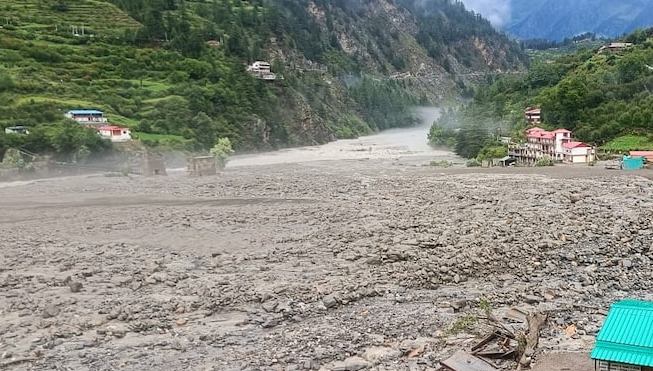Address
304 North Cardinal St.
Dorchester Center, MA 02124
Work Hours
Monday to Friday: 7AM - 7PM
Weekend: 10AM - 5PM

On August 5th, 2025, the quiet village of Dharali in Uttarkashi, Uttarakhand turned into a disaster zone overnight. A sudden cloudburst triggered massive flash floods, destroying homes, displacing residents, and claiming multiple lives. In a region all too familiar with natural disasters, this event has reignited urgent conversations about India’s fragile relationship with climate change, infrastructure, and disaster response.
What Happened?
According to reports, heavy rains pounded the upper Himalayas late into the night, triggering a cloudburst — an extreme weather event where over 100 mm of rain falls within an hour or less. The result was a wall of water and debris that surged through the narrow mountain valleys, sweeping away bridges, roads, and even parts of the local temple.
Emergency services rushed to the scene. Local villagers, accustomed to handling adversity, joined forces with disaster response teams to rescue stranded families and provide shelter to those displaced. But the damage was widespread, and the emotional toll is still being assessed.
A Climate Red Flag
This event is not an isolated case. In recent years, the frequency and intensity of such extreme weather events in India — especially in the Himalayan belt — have increased significantly. Climate scientists point to global warming and altered rainfall patterns as key drivers.
The Himalayas, already prone to landslides and soil erosion, are now facing hyper-charged monsoons. Melting glaciers, warmer air holding more moisture, and unregulated development along riverbanks all contribute to the scale of destruction.
In short: the Uttarkashi disaster is not just a local tragedy — it is a national climate emergency in disguise.
Infrastructure vs. Nature
Over the past decade, Uttarakhand has seen a surge in infrastructure development: highways, tunnels, dams, and tourist resorts. While some of this is necessary to support economic growth and tourism, it often comes at the expense of ecological balance.
Experts have long warned about this. But warnings often get buried under political and commercial interests — until nature asserts itself.
Time to Reassess Priorities
This tragedy forces a difficult but essential question: Is India investing enough in climate resilience and disaster preparedness?
While programs like the National Disaster Management Authority (NDMA) exist, their effectiveness on the ground remains uneven. Many mountain villages still lack early warning systems, flood defense infrastructure, and clear evacuation protocols.
In the age of climate uncertainty, reactive strategies are no longer enough. What’s needed is a proactive, people-first approach that:
Human Cost and Healing
Beyond the numbers and policy, this is ultimately a human story — of families who lost everything, of children pulled from rubble, and of entire communities staring at an uncertain future.
Relief efforts are underway, but rebuilding lives will take months, even years. What they need most right now — besides aid — is assurance that this cycle won’t repeat endlessly.
Final Thoughts
The flash floods in Uttarkashi are more than a natural disaster — they are a mirror to India’s preparedness and priorities. As climate change accelerates, every state — not just the Himalayan ones — must think bigger, act faster, and plan smarter.
Because in a country as vast and diverse as India, disaster prevention is no longer optional — it’s survival.